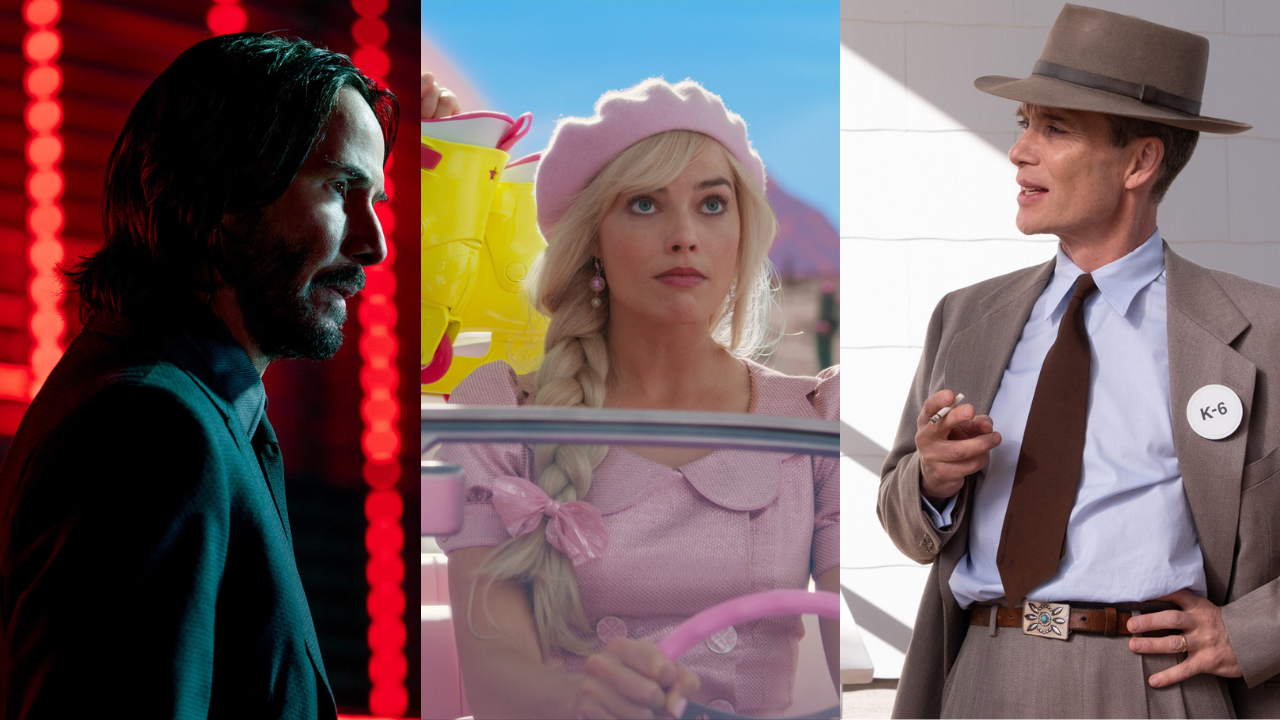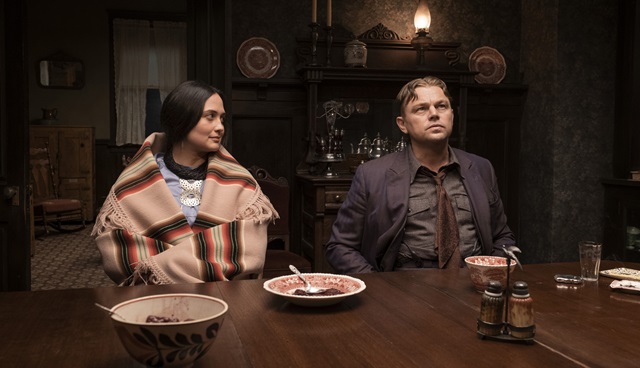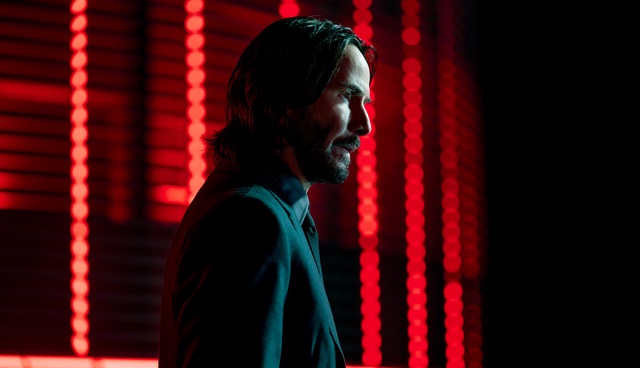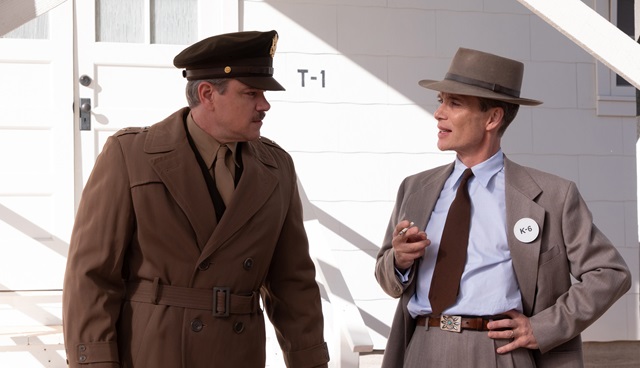
2023 was a pretty great year for film. Across all genres and continents came amazing titles that weren’t just exemplary of the possibilities found in each but also furthered the very language of cinema. Amidst the best of them, a mix of veteran voices and new artists blended universal truths with the deeply personal. It was a surprising year where multiple movies that would normally be solely considered Intellectual Property (IP) cash grabs trading on the old and familiar instead became a chance for artists to experiment and change the very game of filmmaking. There’s a lot of pain explored in the following list of great titles, but never to be exploitative or cheap; always for an opportunity to interrogate humanity, pondering what it all means and how do we move forward. There’s a lot of hilarity along with the heartbreak, and a lot of inventiveness too. It was a pretty great year for film. Here are some of the top movies that stood above the rest.
Honorable Mentions: “Are You There, God? It’s Me Margaret,” “Infinity Pool,” “Suzume,” “How to Blow Up a Pipeline,” “Queendom,” “Polite Society,” “Maestro,” “Saltburn,” “Nimona,” “The Boy and the Heron,” “Blackberry,” “American Fiction,” “Teenage Mutant Ninja Turtles: Mutant Mayhem,” “The Holdovers,” “Asteroid City”
10. “Killers of the Flower Moon”

Martin Scorsese (working with co-writer Eric Roth from the book by David Grann) made a searing indictment that stretched beyond the loathsome criminals at the heart of his tale, but across to the very history of the country. Like many of the best movies of 2023, “Killers of the Flower Moon” is also about the stories we tell—the lies the settlers told themselves to justify their heinous deeds and who are the ones that recount these histories as the years go by. Brilliantly acted and beautifully shot (by DP Rodrigo Pieto), it’s a sumptuous film about genuine ugliness that leaves viewers shaken.
9. “Bottoms”
A hilariously absurd movie, “Bottoms” soars thanks to impressive performances—particularly the leads Ayo Edebiri and Rachel Sennott (who co-wrote with director Emma Seligman). The raucous film constantly goes to new outlandish heights, outdoing itself in “I can’t believe that just happened” every few minutes leading up to a wonderfully anarchic climax that must be seen to be believe. Seligman is careful to make sure the characters at the center of the story, who are spinning their own web of lies, are still likable and engaging no matter how crazy everything gets. It’s a truly unique comedy that will be rediscovered by high school kids for generations.
8. “The Zone of Interest”
Much like “Killers of the Flower Moon,” writer/director Jonathan Glazer looks at how people benefit from atrocities, and how that makes it that much easier to be complicit in them. From the book by Martin Amis, the patriarch at the center of “The Zone of Interest” is actively engaged in genocide while his family enjoys the largesse of such suffering. Without ever going inside the camp, Auschwitz looms large just over the wall of their very nice garden; gunshots and screams occasionally echo into the beatific setting, but it never disrupts the otherwise idyllic scene the family seeks to enjoy. It’s grotesque but done expertly, making viewers think about their own tacit participations in terrible events. How much is ignorant comfort worth?
7. “Barbie”

2023 wasn’t a particularly strong year for comedies across the board; but when they hit, they packed a wallop. “Barbie” was a cultural phenomenon but one with substance to justify it, not just tremendous humor, immaculate set design, but a sincerity at its heart that rings true. Greta Gerwig’s film could’ve been an insightful but didactic slog or a fluffy but soulless cash-in. Instead, it fires on all cylinders to deliver messages without feeling forced or awkward, instead using charm and humor to get its (very timely) points across. Brimming with energy and abundant in style, “Barbie” deserves its status as a milestone of the year that powerfully (but playfully) engages with one’s agency in their own story.
6. “All of Us Strangers”
The protagonist of “All of Us Strangers” is caught between interrogating the past and traversing a haunted present. It’s hard not to identify with Adam (Andrew Scott), as we all grapple with those formulative moments from our histories and witness them impacting our daily lives. Scott’s soulful performance is greatly assisted by Paul Mescal, Jamie Bell, and Claire Foy, each of which adding their own sympathetic layer to Adam’s story. “All of Us Strangers,” through the tears and heartbreak, is a celebration of life. It’s about the redemptive power of love and what we create as we chase that sense of being complete, sometimes defying all sense and logic in order to achieve a level of bliss we are far too often denied.
5. “John Wick: Chapter 4”

It’s hard not to simply devolve into an episode of “The Chris Farley Show” and recount each scene of “John Wick: Chapter 4” followed by a breathless “that was awesome.” Because ultimately that is film: it’s a collection of truly awesome sequences constantly building upon each other to create an unstoppable momentum before it ends quietly, poetically, and perfectly. The fourth installment of the series is a masterclass of action that blends some of the best moments from other movies into an amazing whole. There’s the hand-to-hand fighting, the gunplay, the vehicular damage, and much more. Though all are great, none can top the overhead POV sequence of Wick going room to room with a shotgun and dispatching of enemies that, even in a strong year for film, remains one of the best moments.
4. “Poor Things”
Director Yorgos Lanthimos’ heroine charts a physical journey as she navigates her own personal evolution, all told in a skewed but brilliant manner. The genius of “Poor Things” is that – even with its weird mutant animals and mad science experiments – Tony McNamara’s adaptation of Alasdair Grey’s book wisely grounds the outsized shenanigans in the very real metamorphosis of Bella, played pitch perfectly by Emma Stone. As her brain forms while exploring the sensuous world, Bella greets it with a welcomed frankness common in most of Lanthimos’ work. What sets it apart is that as such experiences mount, the emotions seep in and we witness growth (though never leaving behind the character’s hilarious bluntness) that draws us ever towards her and the film itself. Assisted by great cinematography and design work, and a truly hilarious turn by Mark Ruffalo, “Poor Things” is a bit of a misshapen monster in its own right; but it’s a beautiful abomination that’s utterly fascinating.
3. “Oppenheimer”

In his works, Christopher Nolan has always been fixated on time. Its reversal in “Memento,” the distortion in “Inception,” the syncopation of “Dunkirk,” and the manipulation of it in “Tenet.” While the titular character’s tale is seemingly unstuck in time, this film finds Nolan looking at history. What chaotic elements grew into order to produce someone like Oppenheimer, what he undertook that had never been mounted before or since, and how the world would look back on the work that he did and the man he was. It’s a fascinating movie whose greatest explosions are narrative ones with the fallout being a spiritual sort. “Oppenheimer” itself makes history as being the biggest film about the smallest subject, turning the universal into the personal to weigh the scales to explore a man’s identity.
2. “Past Lives”
I’ll admit it: this movie broke me. I could watch other films about the horrors of history or the tattered lives of people, but none affected me as much as “Past Lives.” It’s almost inconceivable that this is the debut feature of Celine Song as the writer/director has crafted an incredible work of genius that most artists would spend years trying to create. The story of loves lost and discovered, “Past Lives” is beautifully made with spectacular performances by Greta Lee, Teo Yoo, and John Magaro; all three are fully rounded characters whose internal conflicts are brilliantly rendered and exquisitely captured. The audience sympathizes with each as they all struggle with “what ifs” and “coulda beens,” while the conclusion remains an elusive mystery—unknowable yet also inevitable. Song and company made a remarkable picture that left me a mess pondering the forks in my own road.
1. “Spider-Man: Across the Spider-Verse”

There are two major caveats when discussing “Across the Spider-Verse.” First, it’s important to acknowledge that it is the middle chapter of a trilogy, so the follow up entry could retroactively affect how the second part is viewed. Second, there were numerous reports that many animators endured miserable working conditions to complete the project. Neither of these are to be dismissed, nor is the latter fact to be taken lightly, yet it is hard for them to diminish what was accomplished with “Spider-Man: Across the Spider-Verse.” That makes for a very complicated reception, and makes me a very conflicted writer, but I cannot deny the end result that, regrettably and like far too many works, may have been born of misery to produce something miraculous.
Much like “Barbie,” “Across the Spider-Verse” could easily have been a simple trade in on a known property that used well-worn iconography to tell an overly familiar story. Instead directors Joaquim Dos Santos, Kemp Powers, and Justin K. Thompson (working closely with writers/producers Phil Lord and Christopher Miller) crafted a wholly new language of animation that blended multiple genres and styles that resulted in one amazing film. Ditching the usual look of most CG animation, “Across the Spider-Verse” takes impressionism, rough hand-drawn looks, quick cuts, comic book paneling, Ben-Day dots, anime, expressionism, and more to create truly varied and rich worlds that never feel at odds with one another, but instead all part of the same wondrous cloth.
It’s also a story about storytelling. Literally focusing on “canon events” and what happens when those tales fall outside of such fixed points. The individuality that Miles represents is a celebration of the original and what sets him apart as a real hero. Similarly, there has never previously been a film that looks and acts like “Across the Spider-Verse.” The movie achieves greatness across the board in every category to deliver a genuinely human tale of finding one’s place in the vastness of life, while reflecting the very chaotic nature of such a universe (or multiverse). In a pretty great year for cinema, “Spider-Man: Across the Spider-Verse” defies all odds to be that film that not only entertains but will further the literal language of film for years to come.


